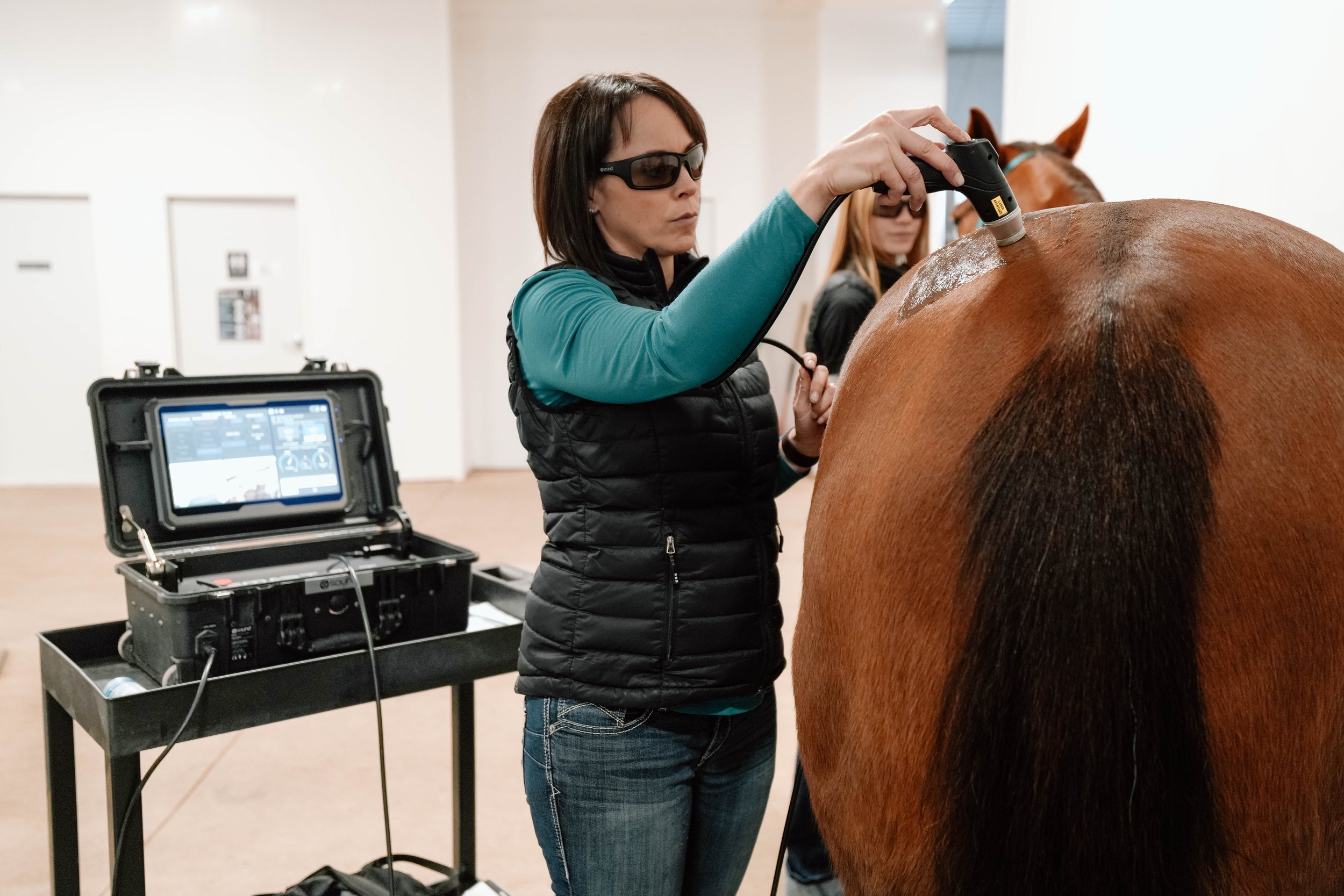Equine Therapy for Trauma Healing: Just How Equines Aid Heal Emotional Wounds
Wiki Article
Assessing the Effectiveness of Laser Therapy in Equine Treatment for Injury Recovery
The evaluation of laser therapy's effectiveness in equine injury rehab hinges on numerous aspects, including recovery time, pain reduction, and tissue regeneration. Vets often observe remarkable outcomes with laser therapy contrasted to traditional techniques, placing it as a vital component in equine care.Recognizing Laser Therapy
Laser therapy has actually come to be an essential tool in veterinary medication, especially in the treatment of equine problems. Understood for its non-invasive nature and effectiveness, laser treatment involves the application of particular wavelengths of light to boost tissue repair service and decrease inflammation. This restorative modality is significantly preferred for its capacity to increase the recovery procedure in steeds enduring from a range of bone and joint injuries and chronic problems.The key mechanism behind laser therapy is its ability to improve mobile features. Furthermore, laser therapy advertises vasodilation, boosting blood circulation and oxygen shipment to damaged cells, hence quickening healing.
In equine medication, laser treatment is especially useful for problems such as tendonitis, osteo arthritis, and injury healing. The technique is lauded for its pain-relieving buildings, enabling equines to reclaim mobility and function extra rapidly. Veterinarians additionally appreciate its minimal adverse effects compared to various other therapy modalities, making it a dependable and secure alternative for equine care.

How Laser Treatment Works

Upon absorption, these photons cause a series of biochemical changes, enhancing mitochondrial feature and resulting in increased adenosine triphosphate (ATP) manufacturing. This increase in ATP accelerates mobile metabolism, promoting tissue repair service and regrowth. Additionally, laser treatment modulates inflammatory responses by affecting cytokine levels and decreasing oxidative stress, therefore minimizing pain and swelling.
An additional substantial element of laser treatment is its role in boosting microcirculation. The treatment promotes vasodilation, improving blood circulation and oxygen delivery to broken tissues (Equine Therapy). This facilitates the elimination of cellular debris and sustains the proliferation of fibroblasts and collagen synthesis, essential for injury recovery
Professional Evidence
The efficacy of laser therapy in equine treatment has been corroborated through different professional studies, showcasing its therapeutic potential throughout an array of conditions. A study carried out by Turner et al. (2012) demonstrated that steeds treated with low-level laser therapy try this website (LLLT) for ligament injuries showed accelerated recovery contrasted to those receiving traditional treatments.Similarly, research study by Johnson and associates (2015) focused on equine muscular tissue injuries, revealing that laser treatment considerably sped up muscle mass fiber regrowth and minimized muscle mass stiffness. Clinical analyses click this site have revealed that laser treatment can minimize persistent conditions such as osteoarthritis.
Vet Insights

Vets likewise value the versatility of laser treatment. It can be used for a large range of conditions, from shallow wounds to much deeper bone and joint injuries. Dr. Emily Brown highlights its utility in treating problems like tendonitis and osteoarthritis, where standard treatments often drop brief. She explains that laser therapy can be customized to the certain requirements of each equine, ensuring ideal outcomes.
Additionally, veterinarians value the capability to integrate laser treatment with other therapy i thought about this techniques. This multimodal technique can improve general treatment efficiency, providing a thorough solution for equine rehabilitation. Such endorsements from experienced professionals underscore the growing approval and application of laser therapy in equine medication.
Practical Factors To Consider
A key facet of executing laser therapy in equine therapy entails comprehending the sensible considerations that ensure its efficiency and safety. It is important to choose the appropriate laser tool, as different types vary in wavelength, power, and penetration deepness. Vets must be well-versed in these criteria to customize treatment methods successfully to each injury typeMoreover, the regularity and duration of laser therapy sessions need mindful planning to make the most of restorative advantages while minimizing any type of prospective damaging impacts. Constant tracking of the steed's action to therapy can lead needed adjustments in the therapy routine. Establishing a risk-free and controlled environment throughout treatments is additionally vital to avoid accidental exposure to laser emissions, which could damage both the equine and the trainer.
Educating and certification of personnel providing laser treatment are extremely important to make certain correct technique and to support security standards. Furthermore, preserving accurate documents of each session, consisting of laser setups and observed results, is essential for evaluating the general effectiveness of the therapy and for making data-driven choices.
Final Thought
Laser treatment has become an efficient modality in equine injury recovery, using significant advantages in recuperation time, pain alleviation, and tissue recovery. Professional research studies underscore substantial improvements in conditions such as tendonitis and osteoarthritis, credited to enhanced mobile function and increased ATP production. Veterinarian monitorings substantiate these findings, highlighting remarkable outcomes compared to typical therapies. For optimal outcomes, constant tracking and individualized therapy procedures stay necessary in leveraging the complete capacity of laser treatment in equine treatment.Report this wiki page